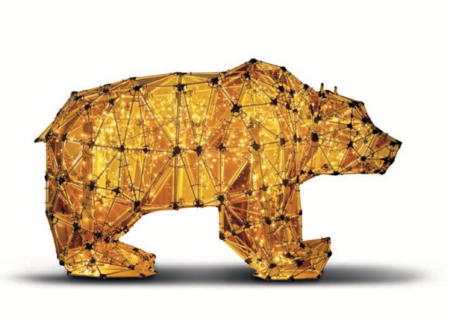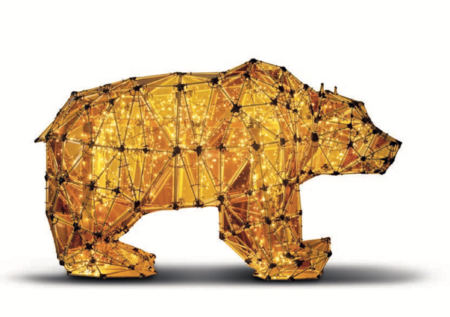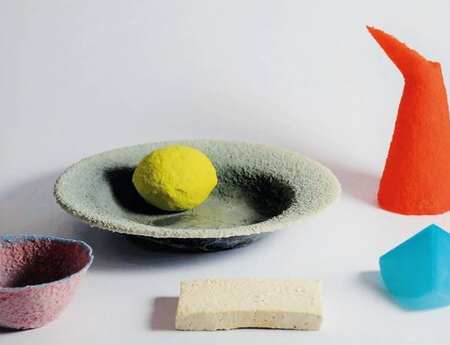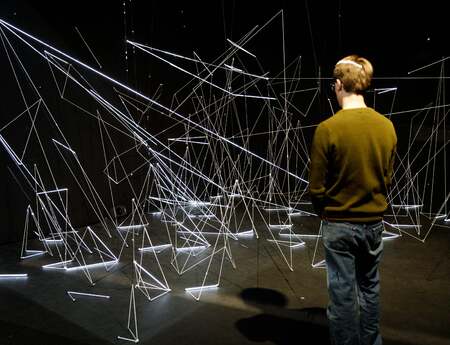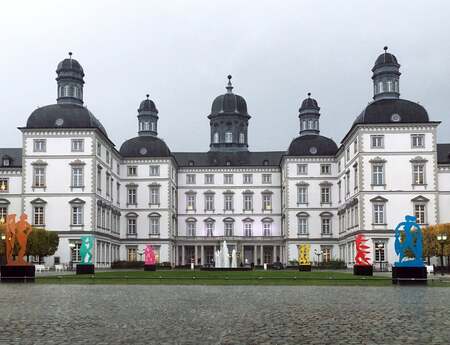Jonathan Michie. Meticulous Constructions
As Jonathan Michie was choosing a university degree three years ago he had set his mind on Animation. But he realised, that the course with its immense pace wouldn’t suit his personality. He likes to fully develop an idea, slowly and meticulously.
On a whim Jonathan Michie attended a weekend course at the National Glass Centre in Sunderland, England. He built a simple stained glass panel according to the traditional work process: creating a design, cutting the glass, cutting the lead, fitting the piece together and soldering the joints. Each of these steps had to be carried out with care and precision. It was this methodical approach that really convinced him to study in Sunderland and thus lured him into the glass world.
In his first year he attended the module Digital Crafts. The first task was to digitally recreate an object from the real world. Michie chose to use a cannon as his muse. It was an ornate model of a cannon made from mahogany and brass. He had purchased it from an antiques shop as a gift for his dad. With patience he took this cannon apart piece by piece. During this process he realised that if he examined the individual parts and accurately analyse their function he could recreate the item digitally. Ever since, Michie applies this knowledge to his own art.
He does not perceive the fusion of art, material science, and computer programming as a discrepancy. He belongs to a generation for which these disciplines are part of everyday life anyway. Michie believes that we are a product of the time we live in. He uses modern technologies not for their own sake, but to rationally employ all available tools relevant for the realisation of his designs. These include digital tools; in short, everything technically available in today’s world.
Michie divides the creation of his work into two separate stages: Firstly, he is a designer. He conjures up an idea and tries to envision the best way to express it to people. He never allows himself to think about the construction method at the designing stage, as this would be limiting. He would only ever design something he knew he could make, and thus would never improve. Secondly, he is a maker. Michie embraces the challenge that he has set himself through the design process. He enthusiastically devises the steps needed to create the piece in the real world. He does not compromise at all. He never alters the design to make it easier to construct or cheaper to produce. The work of art always comes first.
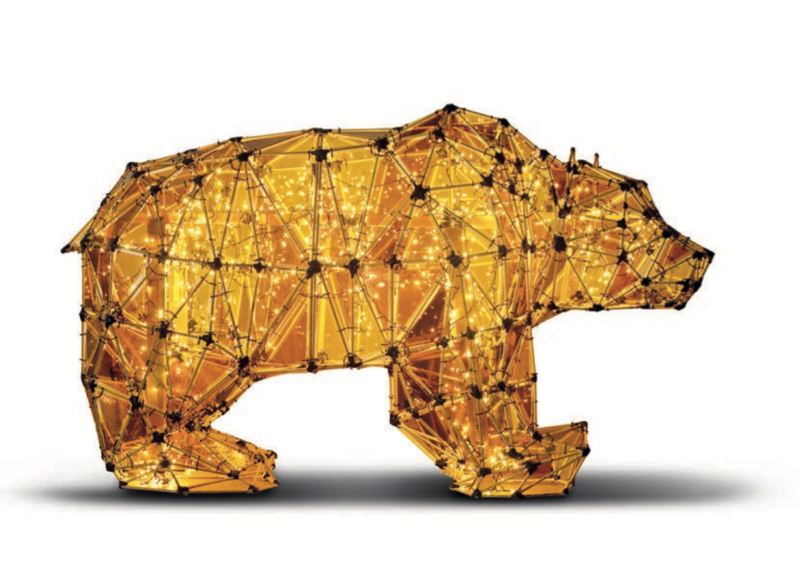
His mostly large-scale works are constructed of numerous, small panes of glass, which he cuts with the water jet after digitally calculated patterns. In 2016, he still used rudimentary materials to construct his sculpture Exit, Pursued by a Bear. At the time, he used wood glue and tape to hold the structure together; with cable ties he fastidiously attached the glass to the structure. In the end he didn’t like how the tape and cable ties distracted from the piece’s overall silhouette.
For his BA Project, The Hunt, he decided on a computer-based method to rectify this flaw. The sculpture is assembled like a frame made out of small steel rods, which are interlinked by synthetic fixings. Each fixing holds various rods at individual angles. The development process went through a series of test runs, which he found quite frustrating. Each time he made an alteration to one fixing he needed to transfer the same alteration to all the other 350 fixings in the design. In order to speed up the procedure Machie calculated the surface dimensions of each joint with the modelling software Rhino and decided to learn Grasshopper, its algorithmic plug-in. In due course he 3D-printed the individual joints with their complex patterns out of the material polyvinyl alcohol, a support material. He also printed small clips to hold the pieces of glass in place. The clips snapped into the joints and are held without the aid of glue.
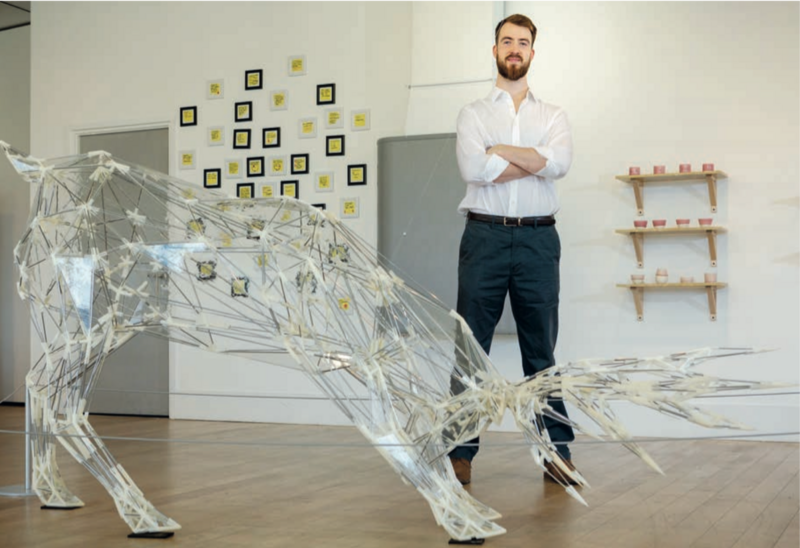
Designing with algorithms was completely new to Michie. It required that he design a process instead of an object. He broke down the steps involved in producing the fixings and compiled them into one algorithm. For the algorism to work, each step had to apply to all the unique fixings. It took him a number of months to write the definition necessary to create all of the fixings for The Hunt. They were to complement the design, make the glass the focal point, connect the structure, and support the glass. The piece was as a result more durable and could also be disassembled if needed.
With The Hunt Michie was runner-up of the 2018 CGS Glass Prize. The jury has recognised a work of art that magnificently illustrates the benefits of contemporary technologies for glass artists. Employing algorithms is not a threat to the immaterial cultural heritage glass making; instead, it is an exciting supplement. The craft gains new stimuli: traditional techniques da- ting to the time before the industrial revolution are complemented with digital tools that enable glass artists to design, manufacture, advertise, and batch produce their own work without any industrial assistance.
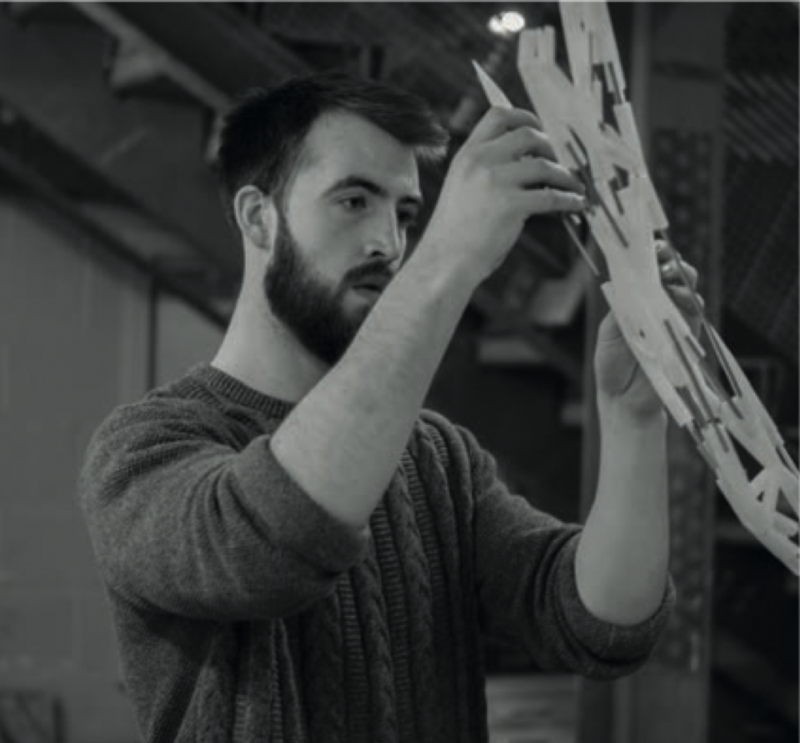
Michie is planning to create a work of art based on Icarus. He wants to capture the moment Icarus is standing on the ledge preparing to leap into open air, not knowing if he will fall to his death or fly to his freedom. In this conflict of fear mixed with hope, the young Brit finds himself. Michie only just finished his university degree; he has equipped himself with a set of tools that can help him succeed. Michie’s body of work is the result of a fusion of intellectual and machine-driven processes, of the natural and the digital worlds. With his art, he challenges our expectations on structural form and the aesthetic narrative in craft, questioning the principle of uniqueness. This is an enormous achievement for an artist who is at the very beginning of his career.
This text is based on written statements from Jonathan Michie in September 2018.
Author: Verena Wasmuth
Expert for glass art and design.
This article was published as part of our cooperation with GLASSHOUSE – International Magazine of Studio Glass 04/18.
